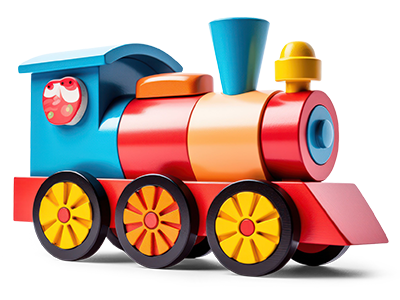Spa Filters are essential for maintaining a clean and serene spa environment, and at spa-wear.com, we understand the importance of high-quality spa experiences. Selecting the right spa filters, along with appropriate spa attire, ensures optimal relaxation and hygiene, contributing to a tranquil and rejuvenating experience. Explore spa-wear.com for our curated selection of spa essentials and discover how to enhance your spa’s filtration system for ultimate comfort and cleanliness. Prioritizing spa hygiene, cleanliness, and comfort are all crucial for a successful spa business.
1. What Are Spa Filters and Why Are They Important?
Spa filters are the unsung heroes of any spa or hot tub, playing a vital role in maintaining clean, clear, and hygienic water. Without efficient filtration, spas can quickly become breeding grounds for bacteria, algae, and other contaminants. Spa filters work by trapping debris, oils, and microscopic particles, ensuring that the water remains pristine and inviting. According to the World Health Organization (WHO), proper water sanitation is crucial for preventing the spread of waterborne diseases in recreational water environments.
Effective spa filtration not only improves the aesthetic appeal of the water but also significantly enhances the overall spa experience. Clean water reduces the risk of skin irritation, infections, and other health issues, allowing guests to fully relax and enjoy their time. spa-wear.com emphasizes the importance of high-quality spa filters as part of a holistic approach to spa hygiene and customer satisfaction.
2. What Are The Main Types of Spa Filters Available?
There are several types of spa filters available, each with its own set of advantages and drawbacks. The most common types include cartridge filters, sand filters, and Diatomaceous Earth (DE) filters.
- Cartridge Filters: Cartridge filters are the most popular choice for spas due to their ease of use and effectiveness in trapping small particles. They consist of a pleated filter element made from paper-like material that captures debris as water passes through. Cartridge filters are relatively easy to clean and replace, making them a convenient option for most spa owners.
- Sand Filters: Sand filters are commonly used in swimming pools but can also be adapted for use in larger spas. They work by passing water through a bed of sand, which traps dirt and debris. Sand filters are durable and require less frequent maintenance compared to cartridge filters, but they may not be as effective at capturing fine particles.
- Diatomaceous Earth (DE) Filters: DE filters offer the highest level of filtration, capable of removing particles as small as 2-5 microns. They use Diatomaceous Earth, a powdery substance made from fossilized algae, to coat the filter element and trap even the finest impurities. DE filters provide superior water clarity but require more complex maintenance and can be more expensive to operate.
Choosing the right type of spa filter depends on the specific needs and preferences of the spa owner, considering factors such as spa size, usage frequency, and desired water quality.
3. How Do Cartridge Spa Filters Work and What Are Their Benefits?
Cartridge spa filters work by mechanically straining water through a pleated filter element, typically made of polyester or paper-like material. As water passes through the filter, debris, dirt, oils, and other contaminants are trapped within the pleats, leaving the water clean and clear. The design of cartridge filters allows for a large surface area within a relatively small space, maximizing their filtration capacity.
The benefits of using cartridge spa filters include:
- Effective Filtration: Cartridge filters are highly effective at removing a wide range of contaminants, ensuring that the water remains clean and hygienic.
- Easy Maintenance: Cartridge filters are relatively easy to clean and replace. Most filters can be cleaned by simply hosing them off with a garden hose, and replacement is a straightforward process.
- Cost-Effective: While the initial cost of a cartridge filter may be slightly higher than other types of filters, their long lifespan and low maintenance requirements make them a cost-effective choice in the long run.
- Space-Saving: Cartridge filters are compact and require minimal space, making them ideal for spas with limited equipment space.
According to a study by the National Sanitation Foundation (NSF), cartridge filters are among the most effective and convenient options for maintaining water quality in spas and hot tubs. spa-wear.com offers a variety of high-quality cartridge filters to suit different spa sizes and filtration needs.
4. How Do Sand Spa Filters Work and What Are Their Advantages?
Sand spa filters operate by passing water through a bed of specially graded sand. As the water percolates through the sand, dirt, debris, and other impurities are trapped between the sand particles, resulting in cleaner water. Sand filters typically consist of a large tank filled with sand, a multi-port valve for controlling water flow, and a pump to circulate the water.
The advantages of using sand spa filters include:
- Durability: Sand filters are known for their durability and long lifespan. The sand media can last for several years before needing replacement, making them a reliable option for spas with high usage.
- Low Maintenance: Sand filters require less frequent maintenance compared to cartridge filters. Backwashing, which involves reversing the water flow to flush out accumulated dirt, is typically only needed every few weeks or months.
- Cost-Effectiveness: Sand filters are relatively inexpensive to operate, as the sand media is readily available and affordable.
- Suitable for Large Spas: Sand filters are well-suited for larger spas with high bather loads, as they can handle a significant amount of water and debris.
While sand filters may not provide the same level of fine filtration as DE filters, they offer a practical and cost-effective solution for maintaining water quality in many spa environments.
5. What Are Diatomaceous Earth (DE) Spa Filters and Why Choose Them?
Diatomaceous Earth (DE) spa filters are renowned for their exceptional filtration capabilities, capable of removing particles as small as 2-5 microns. These filters utilize Diatomaceous Earth, a naturally occurring powder composed of fossilized diatoms (a type of algae), to coat the filter element and trap even the finest impurities. DE filters are commonly used in spas and swimming pools where pristine water clarity is desired.
The advantages of using DE spa filters include:
- Superior Filtration: DE filters provide the highest level of filtration, resulting in crystal-clear water that is free from even the tiniest particles.
- Effective at Removing Bacteria and Algae: DE filters can trap bacteria, algae, and other microorganisms, helping to prevent the growth of harmful pathogens in the water.
- Enhanced Water Quality: By removing a wide range of contaminants, DE filters improve the overall quality of the spa water, making it more enjoyable and refreshing to use.
- Ideal for High-Traffic Spas: DE filters are well-suited for spas with high bather loads, as they can effectively remove large amounts of debris and maintain water clarity.
While DE filters require more complex maintenance and can be more expensive to operate than other types of filters, their superior filtration capabilities make them a worthwhile investment for spas that prioritize top-notch water quality. According to the International Spa Association (ISPA), spas that use DE filters often report higher customer satisfaction rates due to the improved water clarity and hygiene.
6. How to Choose the Right Size Spa Filter for Your Needs?
Choosing the right size spa filter is crucial for ensuring optimal water quality and efficient operation. A filter that is too small may not be able to adequately remove contaminants, leading to cloudy water and potential health hazards. On the other hand, a filter that is too large may result in excessive energy consumption and unnecessary expense.
To determine the appropriate size spa filter for your needs, consider the following factors:
- Spa Size: The size of your spa is the primary factor in determining the required filter size. Larger spas require larger filters to handle the increased water volume.
- Bather Load: The number of people who use the spa on a regular basis also affects the required filter size. Spas with high bather loads need larger filters to remove the increased amount of debris and contaminants.
- Turnover Rate: The turnover rate refers to the amount of time it takes for the entire volume of water in the spa to pass through the filter. A higher turnover rate generally indicates better filtration.
- Filter Flow Rate: The filter flow rate is the amount of water that the filter can process per minute or hour. Make sure that the filter flow rate is compatible with the spa’s pump and plumbing system.
As a general guideline, spas should have a turnover rate of at least once every 30 minutes to maintain adequate water quality. Consult with a spa professional or refer to the manufacturer’s recommendations to determine the specific filter size and flow rate requirements for your spa. spa-wear.com can provide expert advice and assistance in selecting the right spa filter for your unique needs.
7. What Are The Key Features to Look for In a High-Quality Spa Filter?
When selecting a spa filter, it’s important to look for key features that indicate high quality and performance. These features can affect the filter’s effectiveness, durability, and ease of maintenance.
Some of the key features to look for in a high-quality spa filter include:
- Filter Material: The filter material should be durable and capable of withstanding repeated use and exposure to chemicals. Common filter materials include polyester, paper, and Diatomaceous Earth.
- Pleat Count: For cartridge filters, the pleat count is an important indicator of filtration capacity. Filters with a higher pleat count have a larger surface area for trapping debris, resulting in better filtration.
- End Caps: The end caps of the filter should be made from durable materials that can withstand pressure and prevent leaks. Reinforced end caps are particularly important for larger filters.
- Filter Core: The filter core provides structural support for the filter element and helps to maintain its shape. Look for filters with a sturdy and well-designed core.
- Manufacturer Reputation: Choose filters from reputable manufacturers with a proven track record of producing high-quality products. Read reviews and compare ratings to get an idea of the filter’s performance and reliability.
By considering these key features, you can ensure that you select a spa filter that provides effective filtration, long-lasting durability, and ease of maintenance.
8. How Often Should You Clean or Replace Your Spa Filter?
The frequency of cleaning or replacing your spa filter depends on several factors, including the type of filter, the size of the spa, the bather load, and the water chemistry. Regular cleaning and maintenance are essential for ensuring optimal filter performance and water quality.
As a general guideline:
- Cartridge Filters: Cartridge filters should be cleaned every 4-6 weeks, or more frequently if the spa is heavily used. Cleaning involves removing the filter and hosing it off with a garden hose to remove accumulated debris. Cartridge filters should be replaced every 1-2 years, or sooner if they show signs of wear or damage.
- Sand Filters: Sand filters should be backwashed every 1-3 months, or more frequently if the water pressure increases significantly. Backwashing involves reversing the water flow to flush out accumulated dirt. The sand media should be replaced every 3-5 years, or sooner if it becomes compacted or contaminated.
- DE Filters: DE filters should be backwashed whenever the pressure gauge indicates a significant increase in pressure. After backwashing, the filter should be recharged with fresh Diatomaceous Earth. The filter grids should be inspected and cleaned annually, and replaced as needed.
Following a regular cleaning and maintenance schedule will help to prolong the life of your spa filter and ensure that your spa water remains clean and clear. Consult with a spa professional or refer to the manufacturer’s recommendations for specific cleaning and replacement guidelines.
9. What Are Some Common Problems With Spa Filters and How to Solve Them?
Despite regular maintenance, spa filters can sometimes experience problems that affect their performance. Identifying and addressing these issues promptly can help to prevent further damage and maintain water quality.
Some common problems with spa filters include:
- Clogging: Clogging occurs when the filter becomes blocked with debris, dirt, or oils, restricting water flow and reducing filtration efficiency. To solve clogging, remove the filter and clean it thoroughly with a garden hose or filter cleaning solution.
- Damaged Filter Element: The filter element can become damaged due to age, chemical exposure, or physical stress. Damaged filter elements should be replaced immediately to prevent contaminants from entering the spa water.
- Incorrect Filter Size: Using the wrong size filter can lead to inadequate filtration and water quality issues. Make sure that you are using the correct size filter for your spa, as recommended by the manufacturer.
- Bypass: Bypass occurs when water bypasses the filter element, allowing contaminants to enter the spa water unfiltered. Check the filter housing and O-rings for damage or wear, and replace them as needed.
- High Pressure: High pressure in the filter system can indicate a clogged filter, a malfunctioning pump, or a problem with the plumbing. Check the filter for clogging and clean it if necessary. If the problem persists, consult with a spa professional to diagnose and repair the underlying issue.
By addressing these common problems promptly and effectively, you can keep your spa filter operating at peak performance and maintain clean, clear, and healthy spa water.
10. How Can Spa-Wear.Com Help You Choose and Maintain Spa Filters?
At spa-wear.com, we understand the importance of high-quality spa filters in maintaining a clean and relaxing spa environment. We offer a wide selection of spa filters from trusted brands, designed to meet the diverse needs of spa owners and enthusiasts.
Whether you’re looking for cartridge filters, sand filters, or DE filters, we have the perfect solution to keep your spa water crystal clear and hygienic. Our knowledgeable team can provide expert advice and assistance in selecting the right spa filter for your specific needs, considering factors such as spa size, bather load, and desired water quality.
In addition to offering high-quality spa filters, we also provide a range of spa accessories and apparel to enhance your spa experience. From comfortable robes and slippers to luxurious towels and aromatherapy products, we have everything you need to create a serene and rejuvenating spa environment.
Visit spa-wear.com today to explore our selection of spa filters and accessories, and discover how we can help you create the ultimate spa experience. For personalized assistance, contact us at 7014 E Camelback Rd, Scottsdale, AZ 85251, United States, or call us at +1 (480) 947-5400. Let spa-wear.com be your trusted partner in maintaining a clean, comfortable, and inviting spa environment.
11. What Role Does Spa Wear Play in Maintaining Filter Efficiency?
The type of spa wear worn by guests can indirectly impact the efficiency of spa filters. Certain fabrics and materials can shed fibers or release dyes into the water, increasing the load on the filtration system. Choosing appropriate spa wear can help minimize these issues and maintain the cleanliness of the water.
Here’s how spa wear can affect filter efficiency:
- Fabric Shedding: Some fabrics, such as low-quality cotton or synthetic blends, can shed fibers into the water. These fibers can clog filters and reduce their effectiveness. High-quality, tightly woven fabrics are less likely to shed and are a better choice for spa wear.
- Dye Release: Dyes used in clothing can leach into the water, especially during the first few uses. These dyes can cloud the water and make it more difficult for filters to remove impurities. Opting for spa wear made with colorfast dyes can help prevent this issue.
- Lotions and Oils: Spa wear can absorb lotions, oils, and other products that guests apply to their skin. When these products are released into the water, they can create an oily film that clogs filters and reduces their efficiency. Encouraging guests to shower before entering the spa can help minimize this problem.
Choosing spa wear made from high-quality, tightly woven fabrics with colorfast dyes can help reduce the burden on spa filters and maintain water quality. spa-wear.com offers a selection of spa wear designed to be both comfortable and durable, helping to minimize these issues.
12. How Does Water Chemistry Affect Spa Filter Performance?
Water chemistry plays a crucial role in the performance and longevity of spa filters. Imbalances in pH, alkalinity, calcium hardness, and sanitizer levels can lead to various problems that affect the filter’s ability to maintain clean and clear water.
Here’s how water chemistry can impact spa filter performance:
- pH Imbalance: Maintaining the correct pH level (typically between 7.2 and 7.8) is essential for preventing scale buildup and corrosion. Low pH can cause corrosion of metal components, while high pH can lead to scale formation, both of which can clog filters and reduce their efficiency.
- Alkalinity Imbalance: Alkalinity acts as a buffer to stabilize pH levels. If alkalinity is too low, pH can fluctuate rapidly, leading to the same issues as pH imbalance. High alkalinity can cause cloudy water and scale formation.
- Calcium Hardness Imbalance: Calcium hardness refers to the amount of calcium in the water. Low calcium hardness can cause corrosion, while high calcium hardness can lead to scale buildup. Scale can clog filters and reduce their effectiveness.
- Sanitizer Levels: Maintaining proper sanitizer levels (such as chlorine or bromine) is essential for killing bacteria and preventing algae growth. However, excessively high sanitizer levels can damage filter elements and reduce their lifespan.
Regularly testing and adjusting water chemistry is crucial for maintaining optimal filter performance and preventing damage to spa equipment. spa-wear.com recommends using a reliable water testing kit and following the manufacturer’s instructions for maintaining proper water balance.
13. What Are Some Emerging Technologies in Spa Filtration?
The spa industry is continuously evolving, with new technologies emerging to improve filtration efficiency and water quality. These innovations aim to provide cleaner, clearer water with less maintenance and lower operating costs.
Some emerging technologies in spa filtration include:
- UV-C Sanitizers: Ultraviolet-C (UV-C) sanitizers use UV light to kill bacteria, viruses, and algae in the water. UV-C sanitizers can reduce the need for chemical sanitizers, such as chlorine or bromine, and improve water quality.
- Ozone Generators: Ozone generators produce ozone gas, which is a powerful oxidizer that can kill bacteria, viruses, and algae. Ozone generators can also help to break down organic contaminants and improve water clarity.
- Mineral Sanitizers: Mineral sanitizers use minerals, such as silver or copper, to inhibit the growth of bacteria and algae. Mineral sanitizers can reduce the need for chemical sanitizers and improve water quality.
- Advanced Oxidation Processes (AOPs): AOPs combine multiple technologies, such as UV light, ozone, and hydrogen peroxide, to create highly reactive hydroxyl radicals that can destroy a wide range of contaminants. AOPs offer superior water quality and can reduce the need for chemical sanitizers.
- Smart Filters: Smart filters use sensors and automation to monitor filter performance and adjust settings as needed. Smart filters can optimize filtration efficiency, reduce maintenance requirements, and provide real-time data on water quality.
These emerging technologies offer exciting possibilities for improving spa filtration and water quality. As these technologies become more widely adopted, spa owners can expect to see cleaner, clearer water with less maintenance and lower operating costs.
14. What Are The Environmental Considerations for Spa Filter Disposal?
Proper disposal of spa filters is essential for minimizing environmental impact. Spa filters can contain trapped debris, chemicals, and other contaminants that can harm the environment if not disposed of properly.
Here are some environmental considerations for spa filter disposal:
- Cleaning Before Disposal: Before disposing of a spa filter, clean it thoroughly to remove as much debris and contaminants as possible. Use a garden hose to rinse the filter and remove any visible dirt or particles.
- Drying the Filter: Allow the filter to dry completely before disposal. This can help to prevent the growth of mold and bacteria and reduce the risk of contamination.
- Recycling: Some spa filter components, such as the plastic end caps and filter cores, may be recyclable. Check with your local recycling center to see if they accept these materials.
- Proper Disposal: Dispose of the filter in accordance with local regulations. In many areas, spa filters can be disposed of in the regular trash. However, some areas may have specific regulations for the disposal of filters that contain chemicals or other hazardous materials.
- Eco-Friendly Alternatives: Consider using eco-friendly spa filters made from sustainable materials. These filters are designed to minimize environmental impact and can be a more responsible choice for spa owners.
By following these environmental considerations, spa owners can minimize the impact of spa filter disposal and contribute to a more sustainable environment.
15. What Are Some Common Misconceptions About Spa Filters?
There are several common misconceptions about spa filters that can lead to improper maintenance and reduced water quality. Understanding these misconceptions can help spa owners make informed decisions and maintain their spas effectively.
Some common misconceptions about spa filters include:
- All Filters Are the Same: Different types of spa filters offer varying levels of filtration and require different maintenance practices. Choosing the right type of filter for your spa and following the manufacturer’s recommendations are essential for optimal performance.
- Filters Don’t Need to Be Cleaned: Regular cleaning is essential for maintaining filter efficiency and water quality. Neglecting to clean the filter can lead to clogging, reduced water flow, and increased risk of contamination.
- Filters Last Forever: Spa filters have a limited lifespan and need to be replaced periodically. Over time, filter elements can become damaged or worn, reducing their effectiveness. Replacing the filter as recommended by the manufacturer is essential for maintaining water quality.
- More Chemicals Mean Less Filtration: Using excessive amounts of chemicals is not a substitute for proper filtration. While chemicals are necessary for sanitizing the water, they cannot remove debris, dirt, or oils. Proper filtration is essential for maintaining clean and clear water.
- Expensive Filters Are Always Better: While high-quality filters can offer superior performance, price is not always an indicator of quality. Consider the filter’s features, materials, and manufacturer reputation when making your decision.
By understanding these common misconceptions, spa owners can make informed decisions about spa filter maintenance and ensure that their spas remain clean, clear, and healthy.
FAQ About Spa Filters
1. How do I know when my spa filter needs to be cleaned?
You’ll notice reduced water flow, cloudy water, or a pressure increase on your spa’s gauge. Clean it every 4-6 weeks or more often with heavy use.
2. Can I use any cleaning solution on my spa filter?
No, use a filter cleaner specifically designed for spa filters to avoid damage.
3. How often should I replace my spa filter?
Replace cartridge filters every 1-2 years, or sooner if damaged. Sand should be replaced every 3-5 years.
4. What’s the difference between a cartridge, sand, and DE filter?
Cartridge filters are easy to maintain; sand filters are durable; DE filters offer the highest filtration level.
5. How do I choose the right size spa filter?
Consider spa size, bather load, and turnover rate to ensure adequate filtration.
6. What are the signs of a failing spa filter?
Cloudy water, reduced water flow, and frequent clogging indicate a failing filter.
7. Can I clean my spa filter in the dishwasher?
No, the high heat can damage the filter element.
8. What should I do with my old spa filter?
Clean it thoroughly, let it dry, and check local regulations for proper disposal or recycling.
9. Are there eco-friendly spa filter options?
Yes, look for filters made from sustainable materials to minimize environmental impact.
10. How does spa wear affect filter performance?
High-quality spa wear minimizes fabric shedding and dye release, reducing the load on your filter.
By addressing these frequently asked questions, spa owners can gain a better understanding of spa filter maintenance and ensure that their spas remain clean, healthy, and enjoyable for all.





